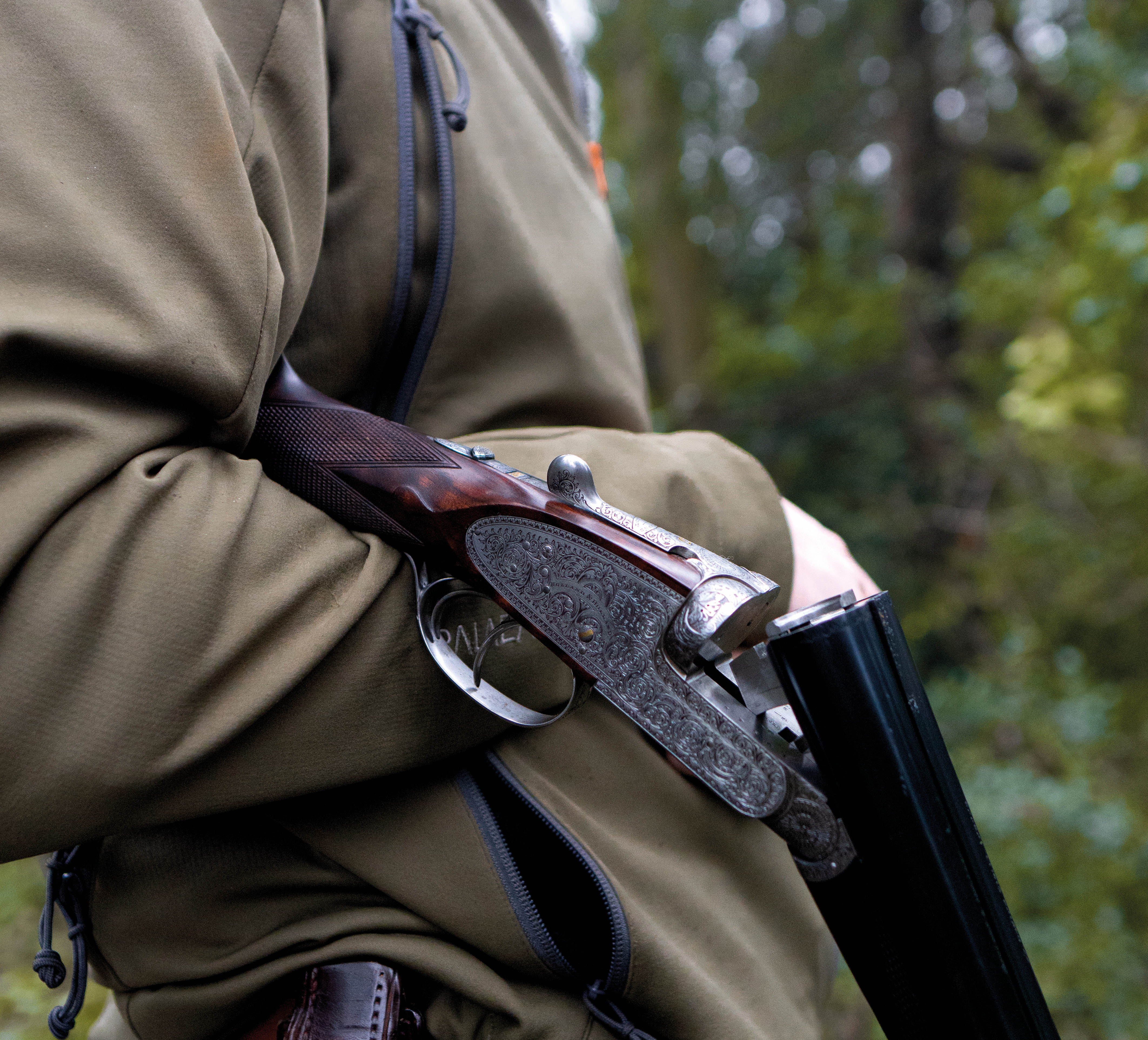Holland & Holland Royal Review: Acquiring and Shooting a Dream Gun
- Last updated: 27/08/2025
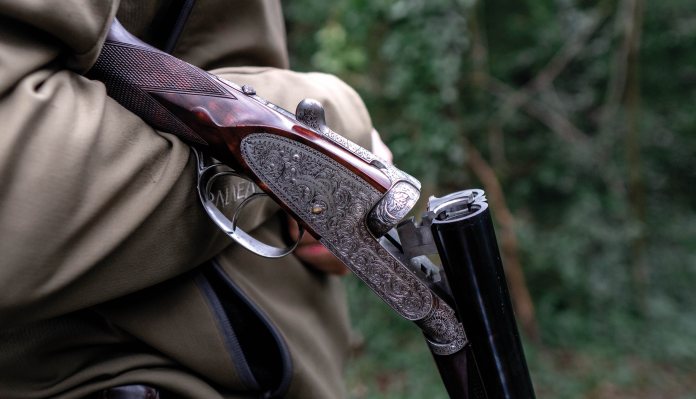
Each of us has a shortlist of guns we dream of owning one day. For many, this is based on looks; for others, it’s performance; and for some, it might be a gun they know will be handed down one day. For me, that list of ‘grail guns’ is a little longer than is perhaps healthy, and mostly features guns that are, and will likely remain, financially out of reach for me for the rest of time.
My list includes a bit of everything, including a few side-by-sides, such as a Boss single trigger, a Grant side-lever with 30” Damascus barrels, and, of course, the inevitable Holland & Holland Royal. Through luck and good fortune, I added a Royal to my collection last year, and it’s this gun that I’m testing today.
New, the Royal costs well over six figures. However, a second-hand example is a little more attainable, with bargain/project guns starting at £3,000 to £4,000, and a nice one sitting at around £8,000 to £12,000. Mine was a right-place, right-time private purchase from someone retiring. It’s neither perfect nor original, but those are things I’m happy with, given my income.
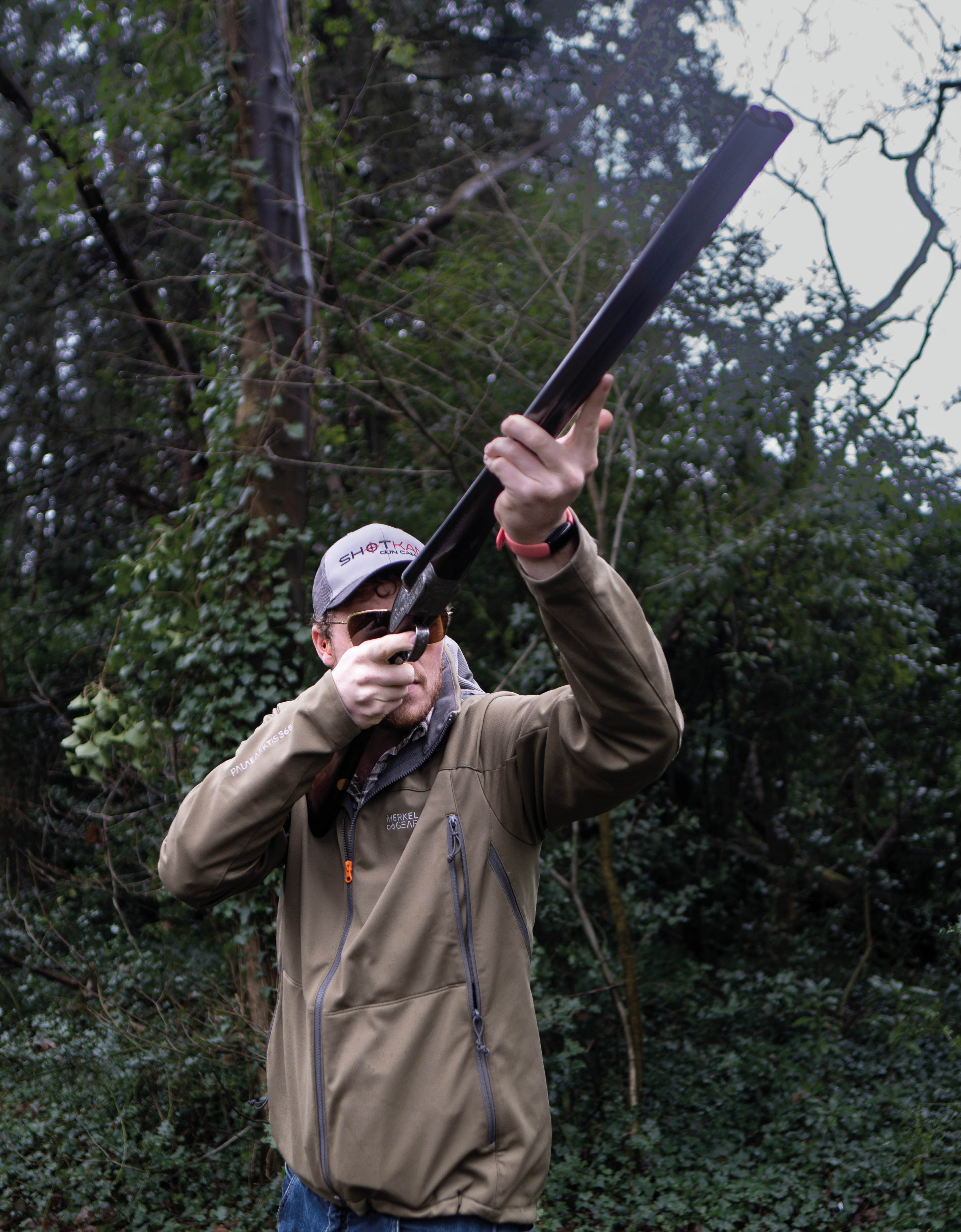
This version has a 1922 action, which is considered one of the best periods of gunmaking, but it was rebarrelled by H&H in the 1980s, a time considered one of the poorest.
The maker then restocked it in the 1990s to complete this time-travel mash-up.
The Royal first appeared in the H&H stable in 1885, and by the early 1890s, it had evolved into something closely resembling the modern gun. One of the only changes was the addition of a self-opening system in the 1920s.
It is the quintessential London sidelock side-by-side, with a strong yet sleek-looking square bar action. My gun features the legendary and much-copied house scroll. It is bolder than most other makers’ classic rose-and-scroll designs, with full-coverage acanthus. It’s undeniably beautiful, and I can’t help but think that in the modern world of bolder engraving, it holds its own better than the Purdey or Boss house patterns.
The new stock is a lovely piece of walnut with an appealing 15” length of pull, with 1.25” and 2.25” drops. It also features 1” of cast, which is good for me, and is done all the way from the back of the action, with a slight bend in the top and bottom tangs. I always admire the skill this takes.
Being an H&H, the stock is done in the traditional diamond grip style. This means that the hand of the gun is not fully rounded, but comes out to a smooth point on the side, creating a diamond profile.
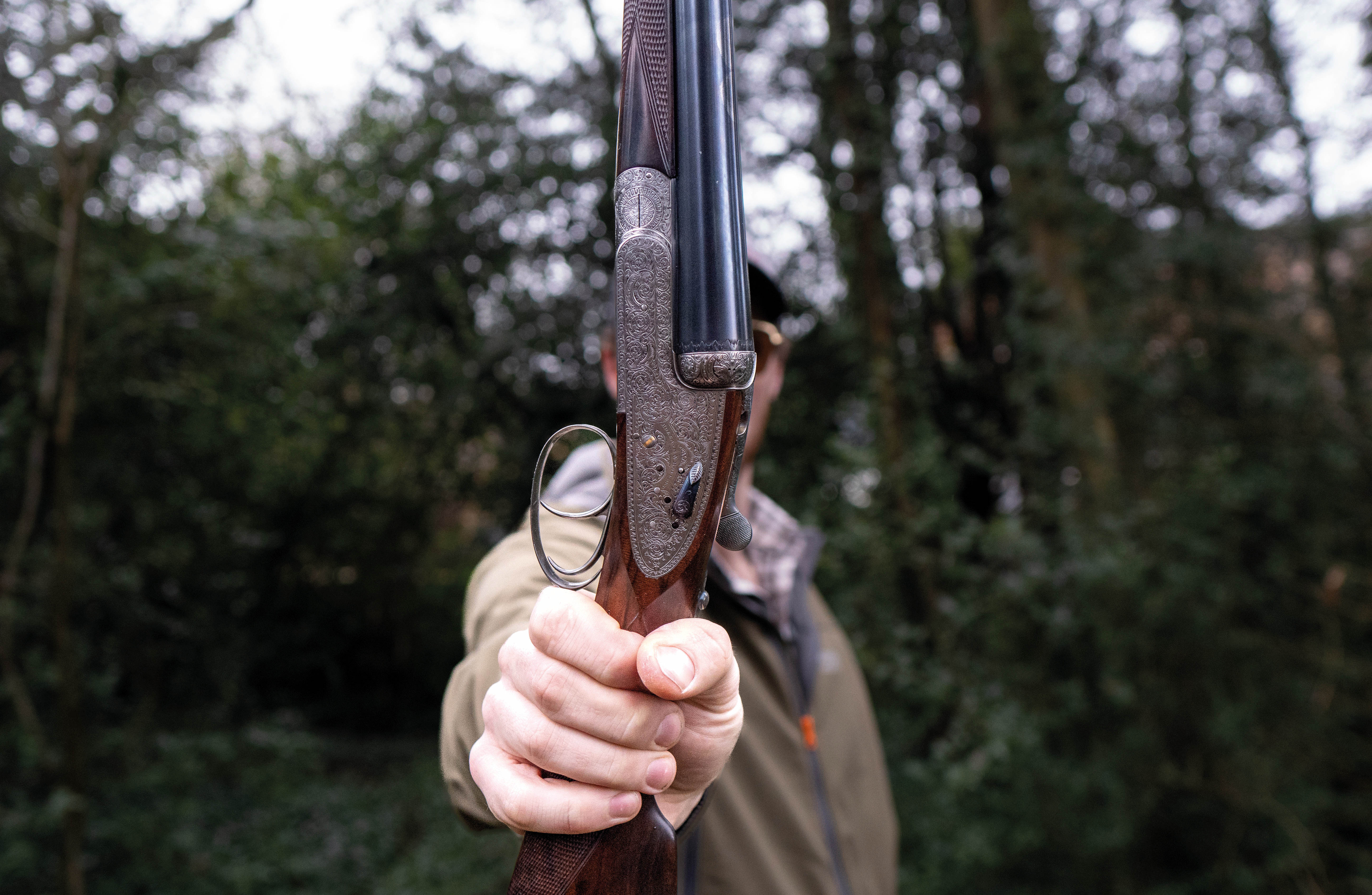
Whether this is more comfortable or not will depend on the user, but the skill of doing this and the heritage that comes with it are the things that make this gun special. The butt is finished with chequering and, although I could do with another inch of length, I am loath to change it.
The barrels measure 28” and have the name and address stamped on the tubes. If I didn’t have the paperwork for the rebarrel, I would have sworn they were done by another maker, as the stamping is hideous next to the hand-engraving on the rib. They were made to be lightweight, which, in the case of side-by-side barrels, generally means reduced wall thickness.
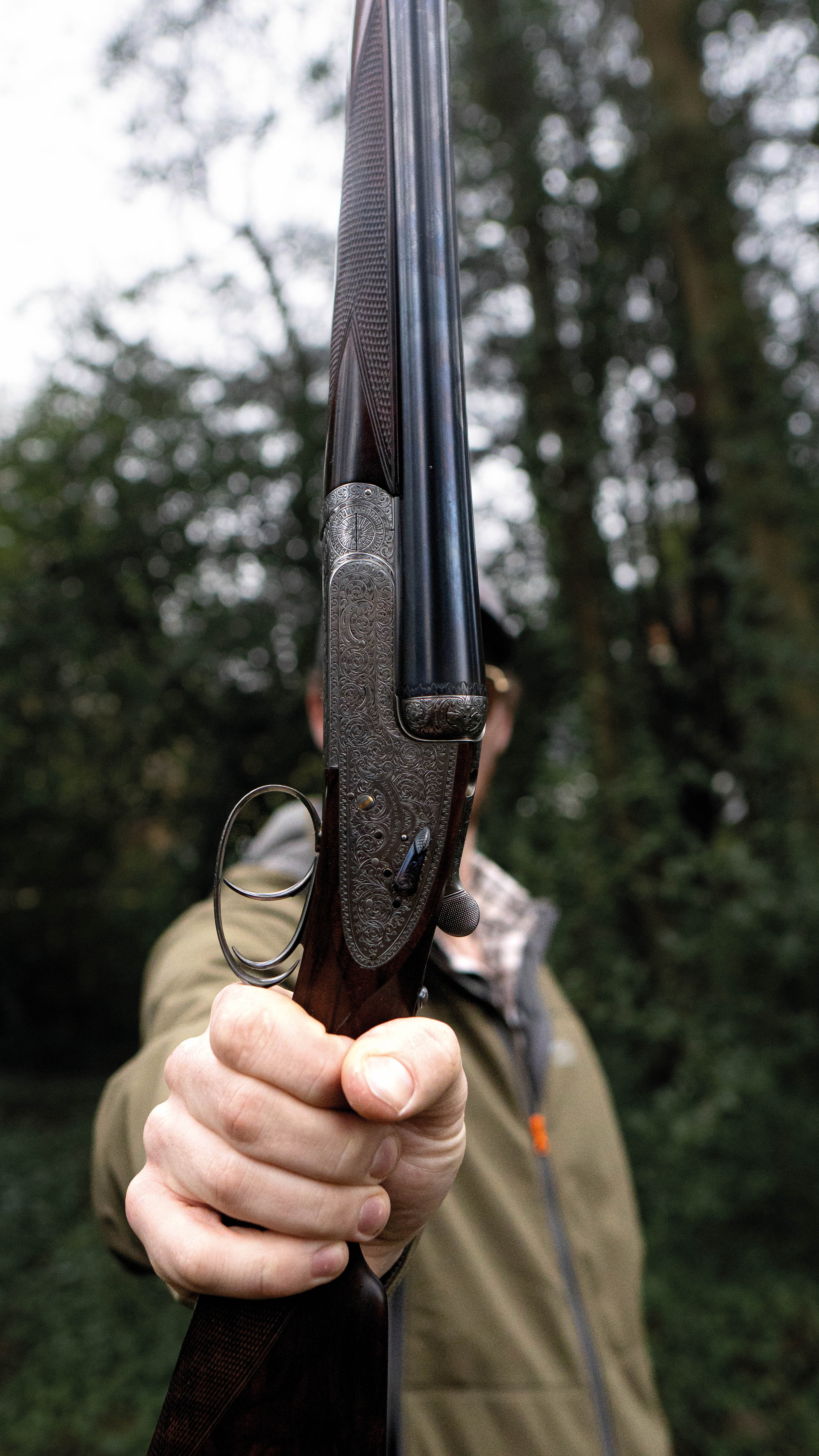
Most modern guns have barrel walls between 30 and 42 thousandths of an inch thick. This gun was made with 22-thou walls, which is right on the recommended minimum. It passed proof and is safe, but I’ll be careful with the non-lead ammo I feed it. These thin barrels are part of what makes this gun affordable, so in a way, I am happy they are that way.
The barrels do handle extremely well, which is a massive positive. They are livelier than I would usually choose, but during my outings with this gun, I have discovered that they are effective when I adjust my aggressive left-hand movements.
The chokes are Skeet and ¼, which I’ve found more than adequate for average-distance quarry.
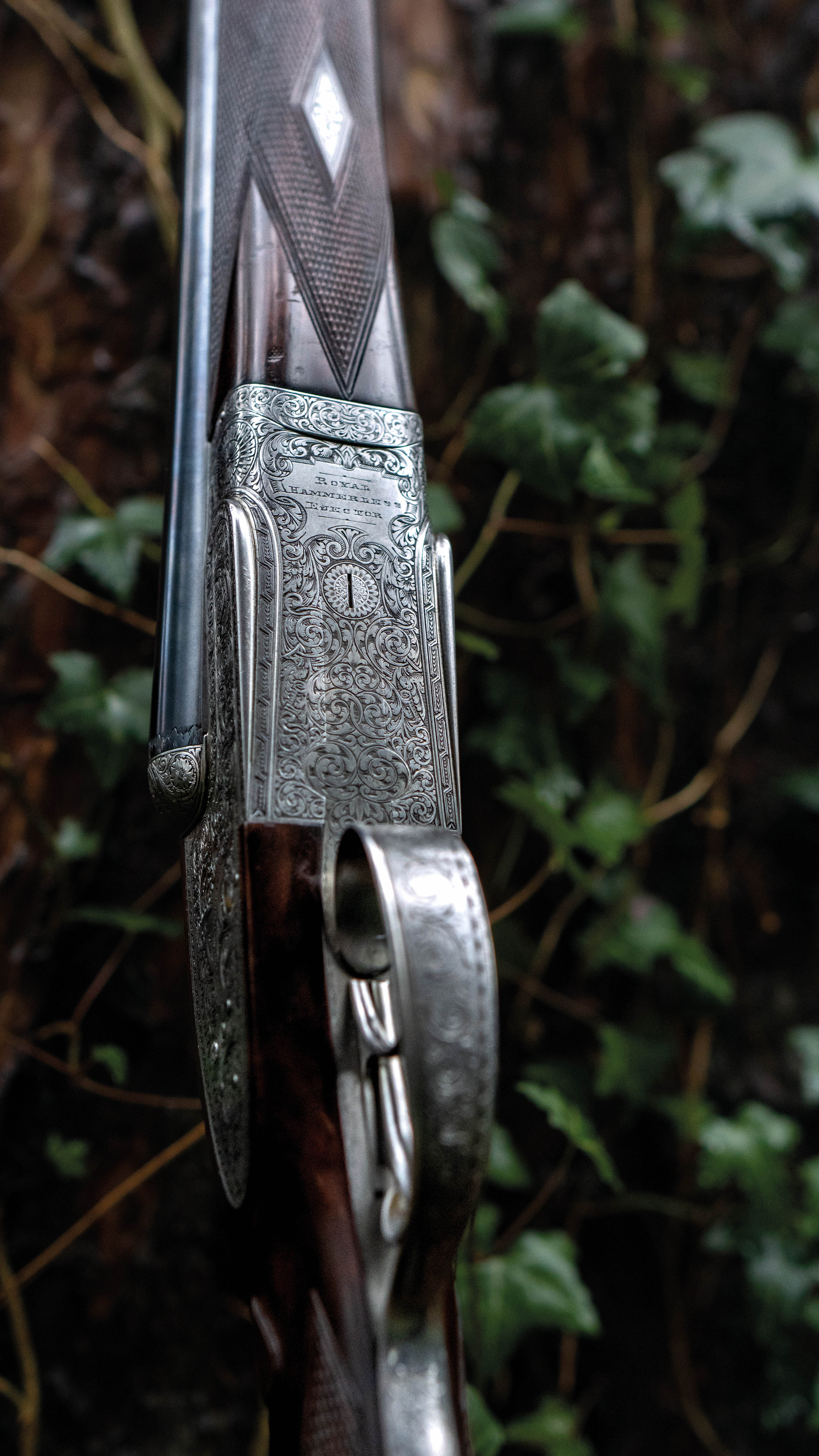
Overall, this gun isn’t original, but it is a H&H, and the modifications add to the richness of the history that it represents. It took me a while to want to shoot it, as I didn’t want to ruin the romance if we didn’t get on in the field. Thankfully, over the course of last season, we made some lasting memories.
When the opportunity to shoot grouse in Scotland arose, I knew it was time for this gun to come with me. The first step was to get to Barbury for a few shots, just to make sure it was actually working, and then the following week, I made the long trip north to the Highlands.
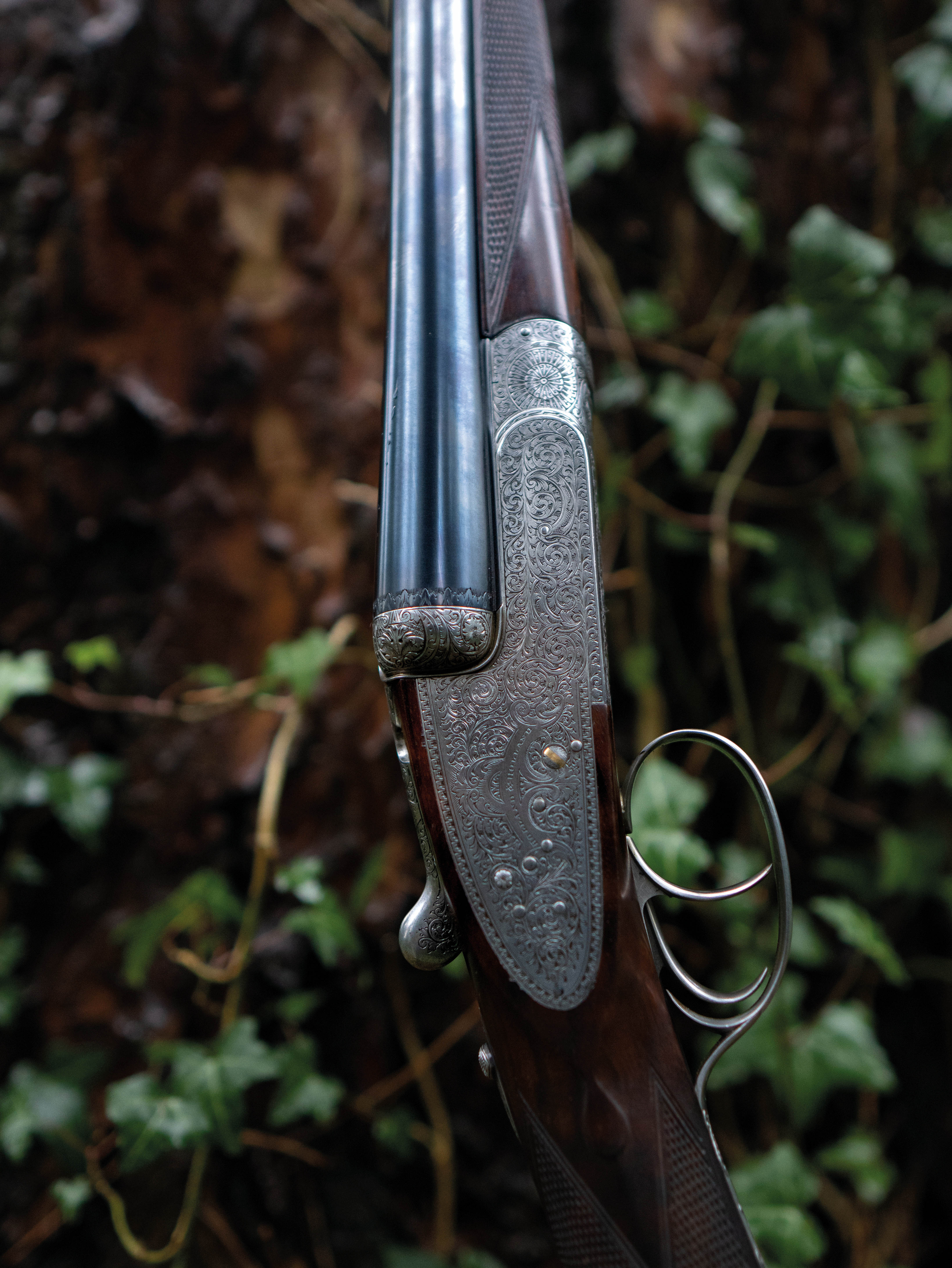
I have had the privilege of shooting grouse before, but never in Scotland, so this was a special occasion, and it did seem fitting to celebrate this with a special gun. This is a consideration I have seen ingrained in the USA, and one I am seeing more and more here.
The gun you choose to take and shoot is as important a facet of the day as the place you go to and the species you are after. Dwelling on this choice a little more than I once did is turning into a bit of a thing for me.
The day went well, and I lent the gun to a dear friend to shoot his first grouse with, but come lunchtime, I had it back in my hands. Within a few hundred yards, a covey of three grouse rose and, clocking a cock bird at the lead of the pack, I locked on, pulled away, and dropped him into the thick heather. A black Labrador swiftly bounded after it over the rise, picking it up with ease and returning it to its master by my side. This was a moment I will remember forever.
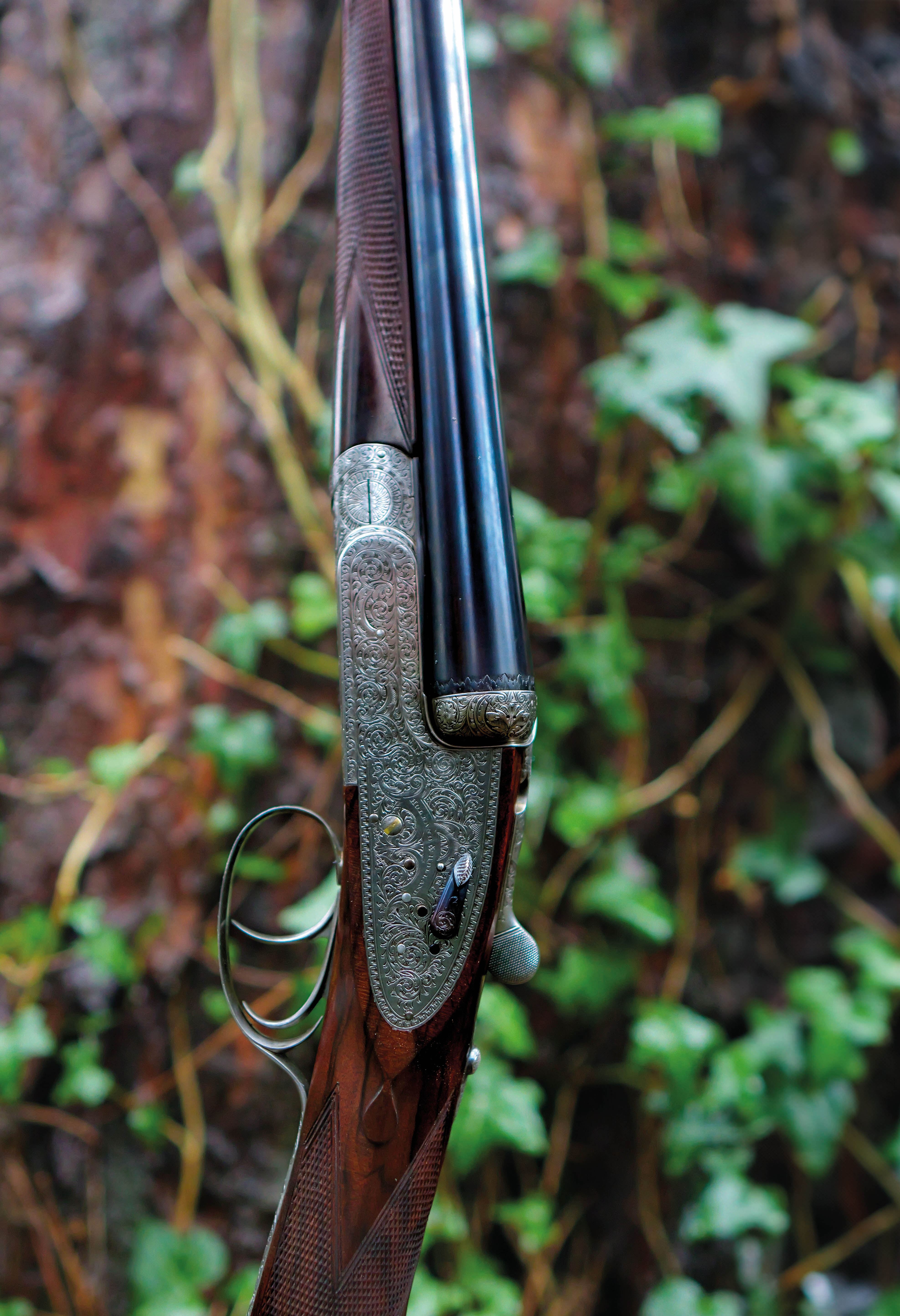
The next outing was an equally memorable experience. For reasons that I will likely never understand, I had the once-in-a-lifetime opportunity to experience a day of driven wild birds in the south of England. Wild bird shoots and their management have been an obsession of mine since I went to Sparsholt many years ago, and I was glad it had taken so long for this day to come. Any earlier, and I don’t think I would have fully appreciated it.
Conditions on the day were thick and foggy, and I opted to shoot the first drive with a 28-bore over-and-under. One pheasant came my way and went into the bag, but it was soon evident that these wild birds were more robust than their released counterparts. The H&H came out for the rest of the day.
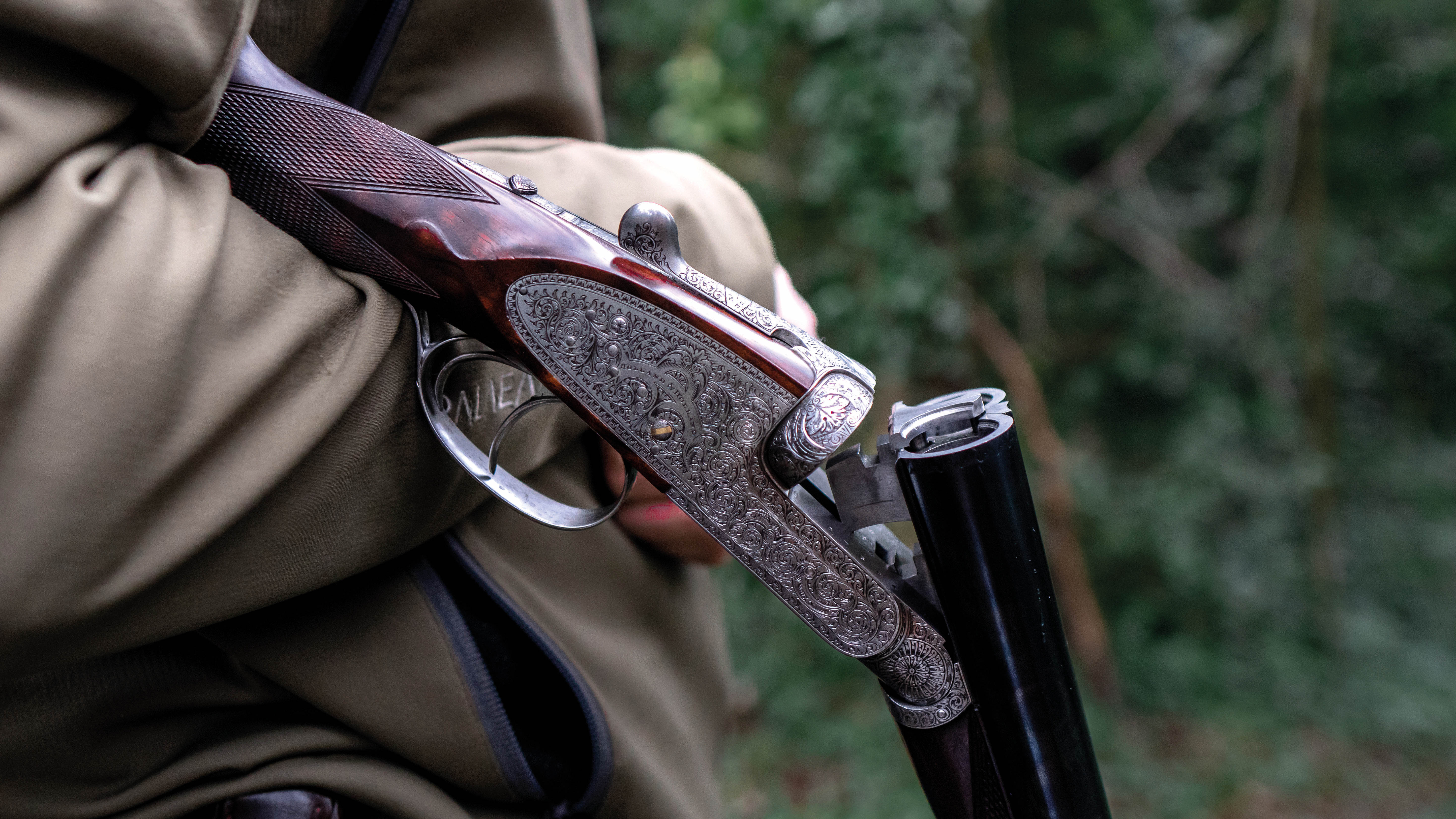
We lined out for the second drive, 30 yards off a thick and well-managed hedgerow. One or two birds flicked to my left and right, until finally a covey of wild red-legged partridges starburst in front of me. Revelling in every wingbeat, I moved my foot to my left and waited for a bird to go through the line before letting the gun fly. All I remember was the bang, the bird falling 50 yards behind the line, and a sense that this was more special than all the reared birds in the world.
I may not have used it a lot, but I am glad that this gun is with me. Together, we have made special days more special, and if that isn’t reason enough to invest in one, I don’t know what is.
